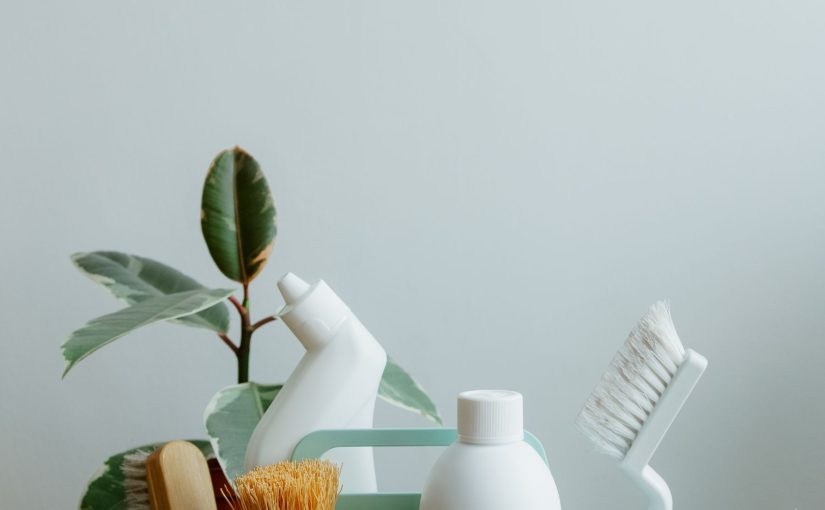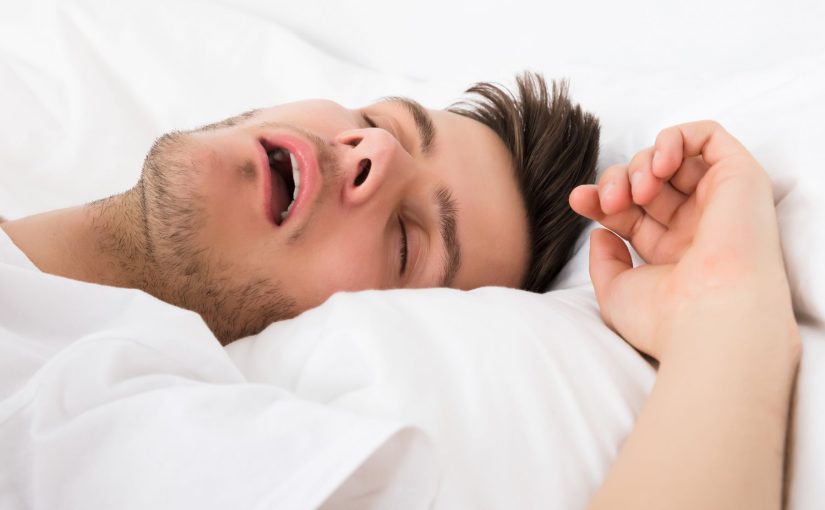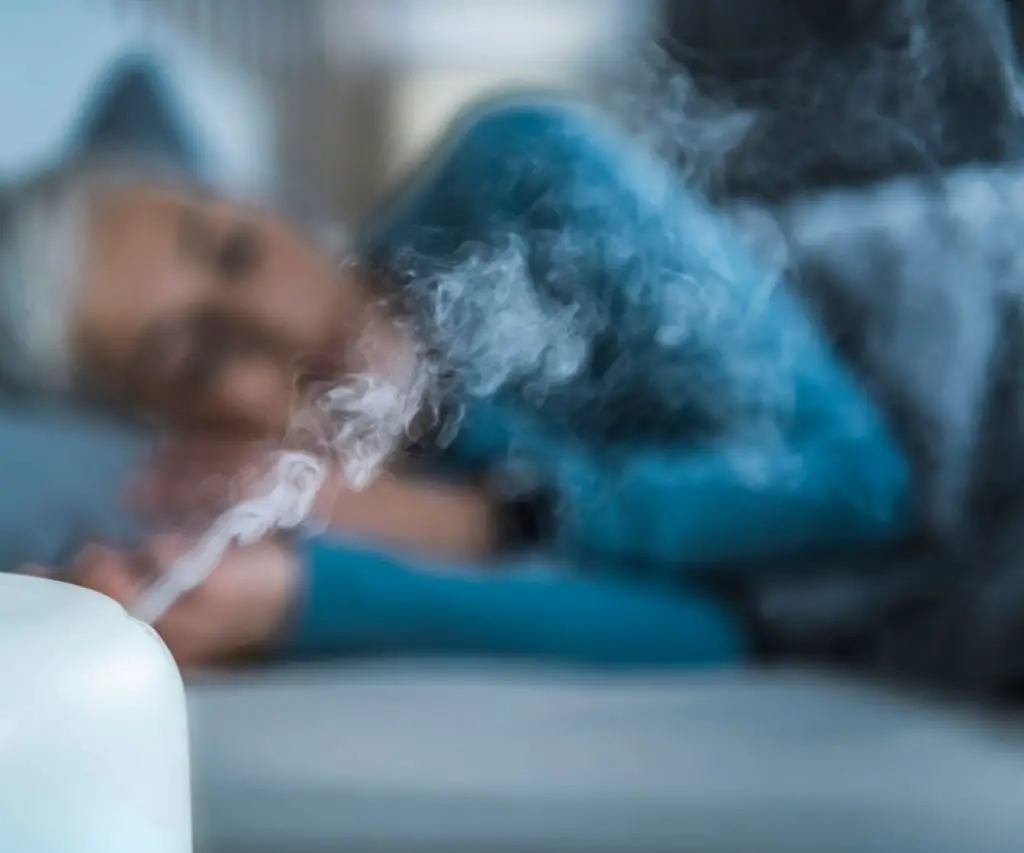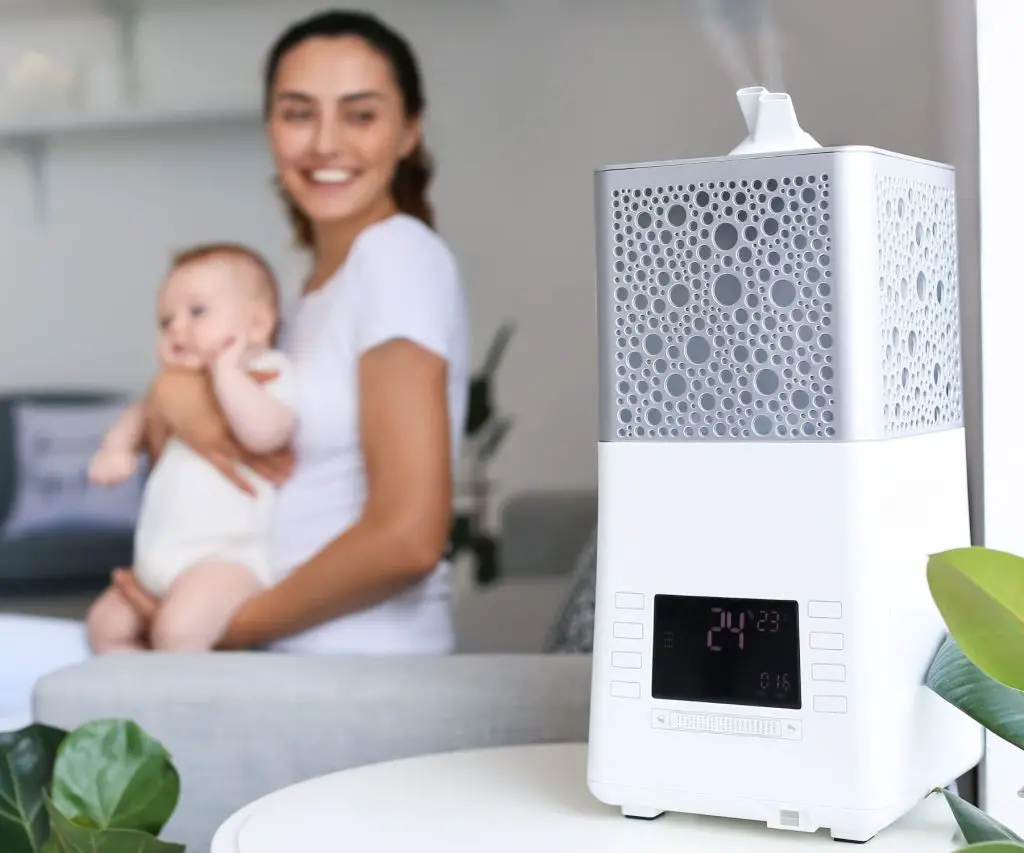Can I Use a Humidifier in a Large Open-Concept Living Space?
 Yes, you can use a humidifier to add moisture to the air in a large open-concept living space. The key factors are choosing a humidifier with sufficient mist output capacity and coverage area to properly humidify the entire open space.
Yes, you can use a humidifier to add moisture to the air in a large open-concept living space. The key factors are choosing a humidifier with sufficient mist output capacity and coverage area to properly humidify the entire open space.
Humidifiers are designed and rated to effectively humidify spaces of certain square footages. Using a humidifier meant for a smaller room in a much larger open area can result in uneven humidity levels, leaving parts of the space under-humidified. A humidifier rated for at least 1,000 square feet or more will be able to properly distribute moisture in an airy open-concept layout.

 How Humidifiers Work in Large Spaces
How Humidifiers Work in Large Spaces
Humidifiers introduce cool mist or warm mist into the air to raise humidity levels. The moisture capacity determines how much area a humidifier can cover. Small portable humidifiers may only be effective for spaces up to 500 square feet. Larger console or whole-house humidifiers like the Levoit OasisMist can humidify areas over 1,000 square feet.
For humidifiers to work properly in a large open floor plan, it needs sufficient moisture output to humidify the entire space evenly. Models that only emit mist in one direction or have a limited range will leave sections of a big room under-humidified.
Look for humidifiers made for large rooms that have features like:
- High moisture output
- Omnidirectional mist distribution
- Powerful fans to circulate mist
This enables the humidifier to maintain optimal 40-50% humidity throughout an open-concept great room or living space.
| Humidifier Type | Moisture Output | Room Size |
|---|---|---|
| Portable humidifier | Low | Up to 500 sq ft |
| Console humidifier | Medium to high | 500 – 1,500 sq ft |
| Whole house humidifier | Very high | Over 1,500 sq ft |
Humidity Levels for Health and Comfort
Maintaining proper indoor humidity levels has various benefits for health, comfort, and your home. Some key reasons to use a humidifier in an open-concept living space include:
- Alleviate dry air discomforts like itchy skin, sore throat, and sinus congestion
- Lessen cold and flu virus transmission in the air
- Reduce asthma and allergy symptoms
- Minimize static electricity, dust, and risks of electrical shocks
- Prevent dryness that can damage furniture and flooring
- Inhibit mold, bacteria, viruses, dust mites and other allergens
- Create a more pleasant environment for entertaining, relaxing and sleeping
The EPA and other health organizations recommend keeping indoor relative humidity between 30% to 50% year-round. Levels below 30% are too dry and can cause the issues above. Over 50% humidity can promote mold growth.
A large room humidifier boosts moisture levels to the ideal 40-60% range, enabling you to enjoy the many benefits without drawbacks of excessive dryness or dampness. 1.
 Choosing the Right Large Room Humidifier
Choosing the Right Large Room Humidifier
Several types of humidifiers are designed to cover large open floor plans:
Ultrasonic Cool Mist Humidifiers
These use ultrasonic vibrations to create micro-fine water droplets that quickly humidify the air. They have high mist output perfect for large spaces and come in console sizes.
Benefits:
- High moisture output
- Whisper quiet operation
- Even cool mist distribution
Drawbacks:
- Requires frequent cleaning
- No warm mist option
Examples: Pure Guardian H965AR Ultrasonic Console Humidifier, TaoTronics TT-AH046 Ultrasonic Humidifier
Evaporative Humidifiers
A fan blows air through a wet wick filter to add cool moisture to the air. They humidify efficiently but only provide cool mist.
Benefits:
- High humidity output
- Low energy use
- Affordable price
Drawbacks:
- Filters need regular cleaning/replacement
- No warm mist mode
- Fan can be noisy
Examples: Essick Air 10-Gallon Console Evaporative Humidifier, AIRCARE MA1201 Whole-House Console Evaporative Humidifier
Vaporizers
These boil water to produce warm steam vapor. The models for large spaces provide cool mist too.
Benefits:
- Warm and cool mist options
- Adds comforting moisture
- Kills airborne germs
Drawbacks:
- Uses more energy
- Water tanks need refilling
- Risk of burns from steam
Examples: Crane USA Warm and Cool Mist Humidifier, Vicks Warm Mist Humidifier
Whole-House Humidifiers
These integrate with home HVAC systems to humidify the entire house. Installation required but provide automated humidity control.
Benefits:
- Maintains set humidity level
- Built-in air purifying benefits
- Low maintenance
Drawbacks:
- High upfront cost
- Professional installation needed
- Risk of leaks if not installed correctly
 Key Features for Open Floor Plan Humidifiers
Key Features for Open Floor Plan Humidifiers
When selecting a humidifier for a large open-concept living space, here are some top features to look for:
Moisture output: Models rated for over 1,000 square feet ensure adequate mist volume for big rooms.
Water tank capacity: Look for tanks that hold at least 1.5 gallons to avoid constant refilling.
Runtime: Runtime of 24 hours or more allows continuous use without shutting off.
Coverage area: Humidifiers that disperse mist in all directions work best for airy layouts.
Auto shut-off: This safety feature turns the humidifier off when the tank is empty to prevent damage.
Smart connectivity: WiFi-enabled humidifiers allow controlling humidity from your phone.
Remote control: Remotes allow adjusting the humidifier from across the room.
Digital display: An LED or LCD display shows current humidity levels and settings.
Automatic humidity monitoring: Humidity sensors automatically adjust mist levels to maintain the ideal range.
Drain options: Models with a direct drain or pump don’t require emptying the tank as often.
Air purification: Some humidifiers integrate air purifying filters to improve air quality.
Essential oil tank: Adding essential oils to the water helps provide aromatherapy benefits.
Auto-shutoff: This turns the unit off automatically when the tank is empty, preventing potential damage.
Casters: Built-in wheels allow easily moving the humidifier around.
Where to Place a Humidifier in an Open Floor Plan
The best placement depends on the layout but focus on these factors:
- Centered in the living space for maximum coverage.
- Near HVAC vents to distribute moisture through existing airflow.
- Near electrical outlets to avoid cord hazards across walkways.
- On an elevated surface for improved mist distribution.
- Away from electronics and wood surfaces to prevent damage from moisture.
- Accessible location to refill tank and perform maintenance.
Caring for Your Open Room Humidifier
Proper maintenance is key to ensuring good performance and avoiding problems like mold growth. Follow the manufacturer’s directions but here are some general tips:
- Clean the tank weekly with a water and vinegar solution to prevent mineral buildup and kill bacteria.
- Use distilled or filtered water to minimize scale deposits.
- Replace filters as recommended, usually every 1-2 months.
- Let parts fully dry before reassembling after cleaning.
- Follow directions to clean ultrasonic disks, wicks, and other parts.
- Tighten valves and inspect seals regularly to check for leaks.
- Store the humidifier dry during long periods of inactivity.
FAQs About Humidifiers for Large Open Spaces
How big should a humidifier be for an open-concept living room?
Look for humidifiers rated to cover at least 1,000 square feet or more to sufficiently humidify large open living rooms or great rooms. Console humidifiers and whole-house models are ideal for big spaces.
Where should I place a humidifier in a large open room?
Ideally, place it centrally in the living space to maximize humidification range. Elevate it and keep it away from electronics and wood surfaces. Having it near HVAC vents helps circulate the moisture.
How do I maintain humidity levels in a large open-concept house?
Use a humidistat-controlled humidifier to automatically maintain 40-50% humidity. Seal air leaks that contribute to dryness. Run the humidifier daily and clean it weekly. Use a hygrometer to monitor humidity.
What humidity level is too high for a living room?
Indoor humidity levels higher than 50% can promote mold growth in living rooms. Look for humidifiers with auto shut-off when the desired humidity is reached to prevent excessively high levels.
Can I run a humidifier 24/7 in an open floor plan?
You can as long as the humidifier is sized sufficiently, placed properly, and cleaned regularly. Use a hygrometer to monitor humidity and adjust run times accordingly. Automated humidifiers help maintain ideal levels.
Conclusion
Humidifying a large open-concept living space optimizes comfort and respiratory health. Look for a console humidifier designed to cover over 1,000 square feet. Ultrasonic and evaporative humidifiers work well to distribute mist evenly throughout big open rooms. With proper placement, humidity monitoring, and maintenance, a humidifier can effectively and safely add moisture to the air. Investing in the right large room humidifier provides healthier air and an improved living environment.
Authority site link:



 Choosing the Right Large Room Humidifier
Choosing the Right Large Room Humidifier Key Features for Open Floor Plan Humidifiers
Key Features for Open Floor Plan Humidifiers
 Cleaning the water tank of your humidifier regularly is crucial to ensure proper functioning and prevent potential health hazards. Hard water minerals, mold, bacteria, and other contaminants can quickly build up inside the tank if not removed through frequent cleaning. Follow this comprehensive guide to learn the best practices for deep cleaning your humidifier’s water tank.
Cleaning the water tank of your humidifier regularly is crucial to ensure proper functioning and prevent potential health hazards. Hard water minerals, mold, bacteria, and other contaminants can quickly build up inside the tank if not removed through frequent cleaning. Follow this comprehensive guide to learn the best practices for deep cleaning your humidifier’s water tank.
 Yes, using a humidifier can help relieve a dry, irritated throat that results from snoring. This is because snoring often occurs due to dried out, inflamed tissues in the throat that vibrate as air passes over them. The moisture from a humidifier can lubricate and soothe these tissues, reducing inflammation and vibration.
Yes, using a humidifier can help relieve a dry, irritated throat that results from snoring. This is because snoring often occurs due to dried out, inflamed tissues in the throat that vibrate as air passes over them. The moisture from a humidifier can lubricate and soothe these tissues, reducing inflammation and vibration. Is a Humidifier an Effective Snoring Solution?
Is a Humidifier an Effective Snoring Solution?

 Seeing an Eye Doctor for Ongoing Dryness Issues
Seeing an Eye Doctor for Ongoing Dryness Issues
 Install Water Filter
Install Water Filter
 Parenthood is a journey filled with countless joys and memorable milestones, but it also brings its fair share of challenges, including unexpected ones like dealing with your baby’s dry and cracked lips. As a parent, you want nothing but the best for your little one, and those tiny lips, so delicate and soft, deserve special attention.
Parenthood is a journey filled with countless joys and memorable milestones, but it also brings its fair share of challenges, including unexpected ones like dealing with your baby’s dry and cracked lips. As a parent, you want nothing but the best for your little one, and those tiny lips, so delicate and soft, deserve special attention. The Benefits of Using a Humidifier for Your Baby:
The Benefits of Using a Humidifier for Your Baby:
 Additional Tips for Baby Lip Care
Additional Tips for Baby Lip Care

 Signs the Filter Needs Replacement
Signs the Filter Needs Replacement
 Tips for Using Humidifiers Safely
Tips for Using Humidifiers Safely